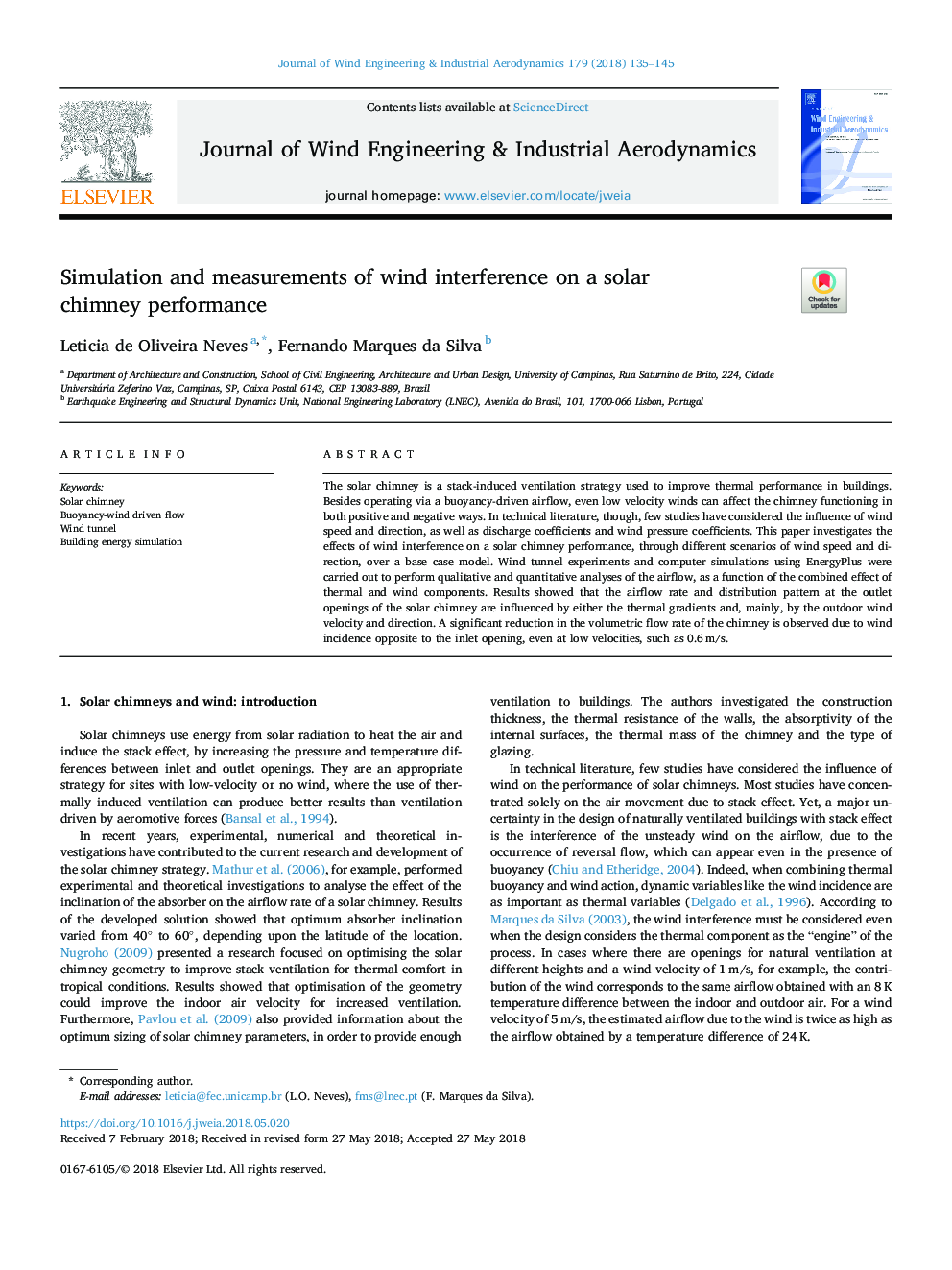| Article ID | Journal | Published Year | Pages | File Type |
|---|---|---|---|---|
| 6756814 | Journal of Wind Engineering and Industrial Aerodynamics | 2018 | 11 Pages |
Abstract
The solar chimney is a stack-induced ventilation strategy used to improve thermal performance in buildings. Besides operating via a buoyancy-driven airflow, even low velocity winds can affect the chimney functioning in both positive and negative ways. In technical literature, though, few studies have considered the influence of wind speed and direction, as well as discharge coefficients and wind pressure coefficients. This paper investigates the effects of wind interference on a solar chimney performance, through different scenarios of wind speed and direction, over a base case model. Wind tunnel experiments and computer simulations using EnergyPlus were carried out to perform qualitative and quantitative analyses of the airflow, as a function of the combined effect of thermal and wind components. Results showed that the airflow rate and distribution pattern at the outlet openings of the solar chimney are influenced by either the thermal gradients and, mainly, by the outdoor wind velocity and direction. A significant reduction in the volumetric flow rate of the chimney is observed due to wind incidence opposite to the inlet opening, even at low velocities, such as 0.6â¯m/s.
Related Topics
Physical Sciences and Engineering
Energy
Renewable Energy, Sustainability and the Environment
Authors
Leticia de Oliveira Neves, Fernando Marques da Silva,
